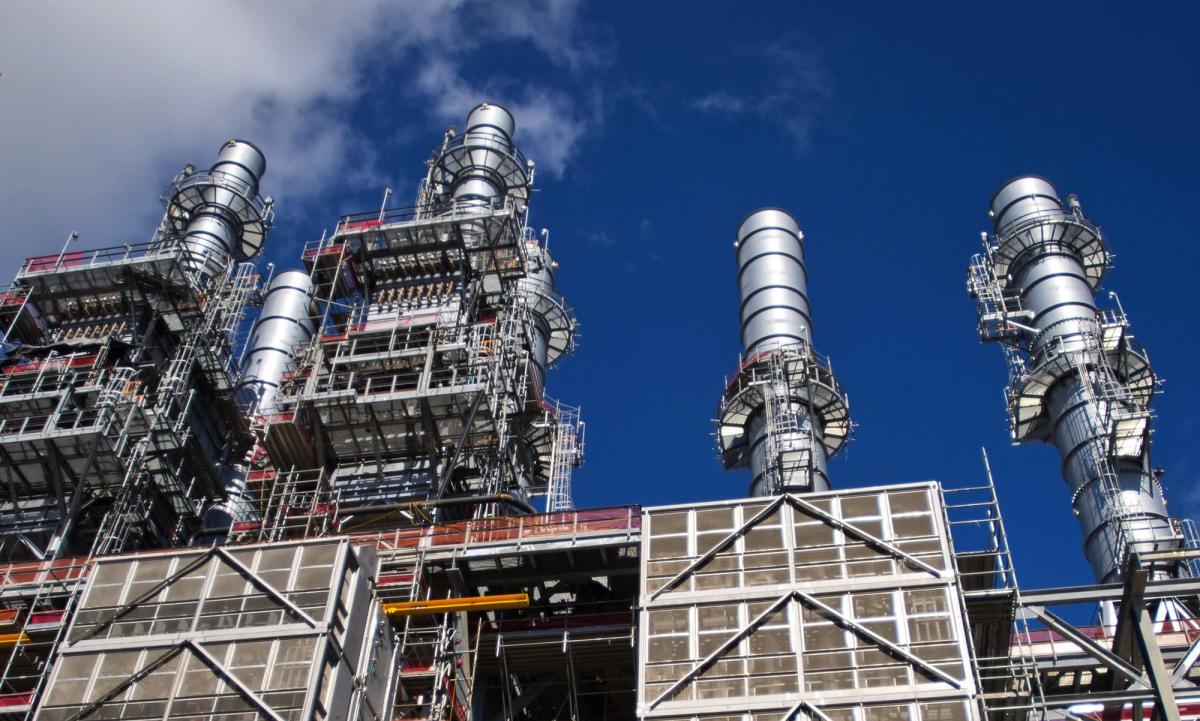
(Bloomberg) — Natural gas exports from the US are soaring amid a global shortage of the fuel, but traders are betting that producers in one of the biggest shale basins will be selling their supply at a discount next year. The culprit: A lack of pipelines.
Companies including Kinder Morgan Inc., Energy Transfer LP and MPLX LP, which own and operate massive networks of conduits stretching from coast to coast, are proposing or moving ahead with projects that would collectively move almost 6 billion cubic feet of additional gas to terminals shipping liquefied natural gas from the Gulf Coast. That’s equivalent to nearly 6% of current US gas production. The pipelines will lift US gas exports to a fresh record and help tame prices in Asia and Europe, which have been running red-hot since Russia’s invasion of Ukraine.
But some of the projects won’t start up until late 2023 at the earliest. That’s not soon enough for gas producers in the Permian Basin of West Texas and southeastern New Mexico, where a supply surge in 2018 and 2019 filled pipelines to capacity and forced drillers to pay someone to take the fuel off their hands. Now output is rocketing higher again, threatening to trap gas in the region until more conduits can be built to shuttle it to US consumers and export terminals.
“Not every pipeline proposed will get built, but there’s definitely room for more than one” new conduit in Permian and in Louisiana’s Haynesville shale basin, said Gabriel Moreen, a managing director at Mizuho Securities LLC. “The pipeline industry is aggressively attacking the capacity issue.”
Gas production in the Permian, which straddles West Texas and southeastern New Mexico, has averaged about 13.8 billion cubic feet so far this year, BloombergNEF data show. That’s an increase of more than 20% from a year earlier. At this pace, drillers will start facing pipeline constraints as soon as this year, according to Tudor, Pickering, Holt & Co.Prices are already reflecting traders’ expectation of bottlenecks. Gas for delivery in West Texas in the summer of 2023 is trading at a wider discount to the benchmark Henry Hub in Louisiana, Bloomberg Fair Value prices show. Supplies at the Permian’s Waha hub are trading about $2 below Henry Hub, compared with roughly 50 cents a year ago. Though a return to the sub-zero pricing of three years ago is unlikely, Permian gas could languish at a persistent discount to benchmark prices until more pipelines start up.
”While the long-term outlook has improved, the basin still looks likely to test physical constraints” next year, with Waha potentially trading at a bigger discount to Henry Hub compared with 2019 given that Gulf Coast prices are now much higher, Colton Bean, an infrastructure analyst at Tudor, Pickering, Holt & Co., said in a note to clients.
Pipeline jams also threaten to become an issue for the climate. In the oil-rich Permian, drilling is driven by the economics of crude, not that gas that’s extracted alongside it. So when there’s no more room on conduits to carry gas to consumers, producers will simply burn it off, a practice known as flaring that’s come under fire from environmental groups and has even drawn scrutiny from notoriously hands-off Texas regulators.
The need for new pipelines has become more urgent as the global gas-price rally and soaring domestic production help cement the US’s position as one of the world’s biggest exporters of the fuel, allowing developers to clinch the financial backing they need to build new Gulf Coast export terminals. Venture Global LNG said on Wednesday that it was moving ahead with a second project in Louisiana after arranging $13.2 billion of financing.
On Thursday, Enbridge Inc. said it would move forward with an project in Louisiana that will allow it to deliver 1.5 billion cubic feet a day of gas to the terminal.
Pipeline operators are also targeting expansions in the Haynesville basin, which spans northeast Texas and northwest Louisiana, as a way to boost supplies to LNG exporters. Williams Cos. is weighing a new pipeline in Louisiana, while Enterprise Products Partners, Energy Transfer and DT Midstream Inc. have also unveiled plans to increase capacity in the region.
One thing Gulf Coast pipeline developers largely won’t have to worry about is the environmental opposition that’s bedeviled Northeast projects, several of which were scuttled after lengthy legal battles. And most of the proposed conduits that would serve LNG terminals operate within a single state, which means they don’t require approval from the Federal Energy Regulatory Commission, the agency that oversees interstate pipelines.
©2022 Bloomberg L.P.